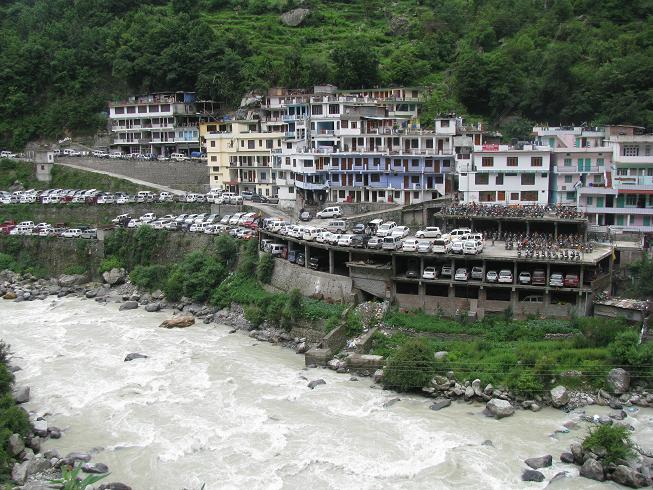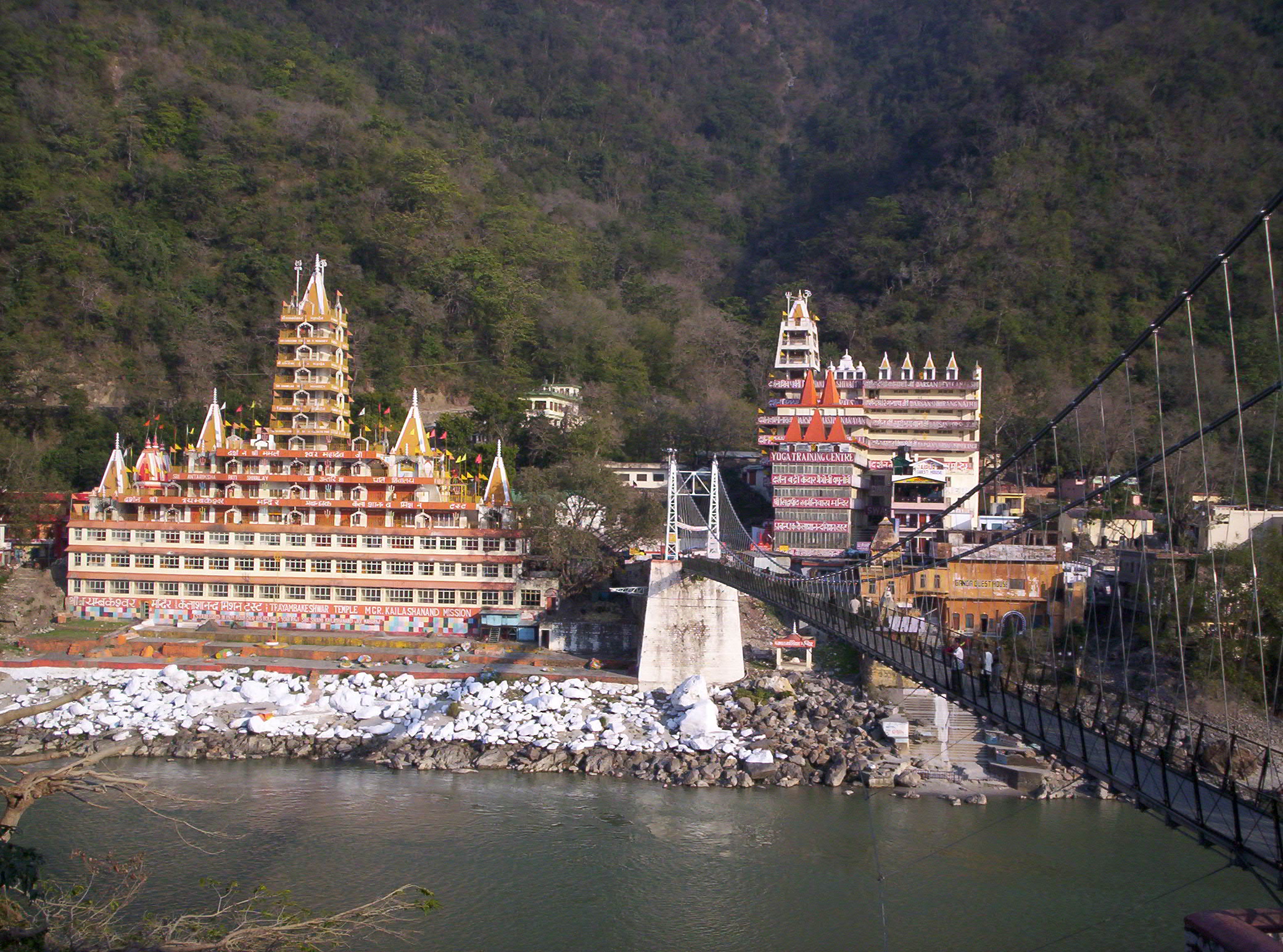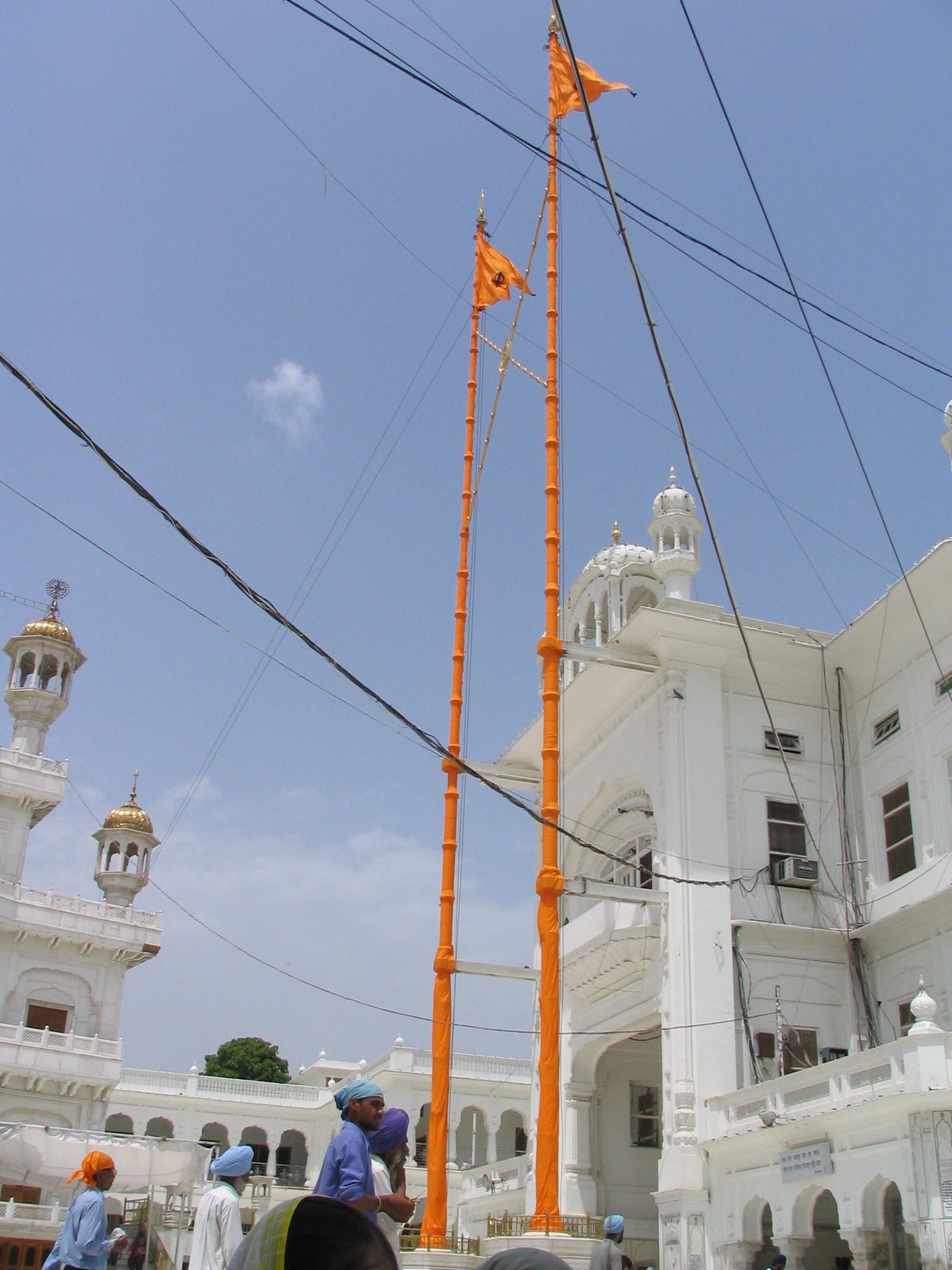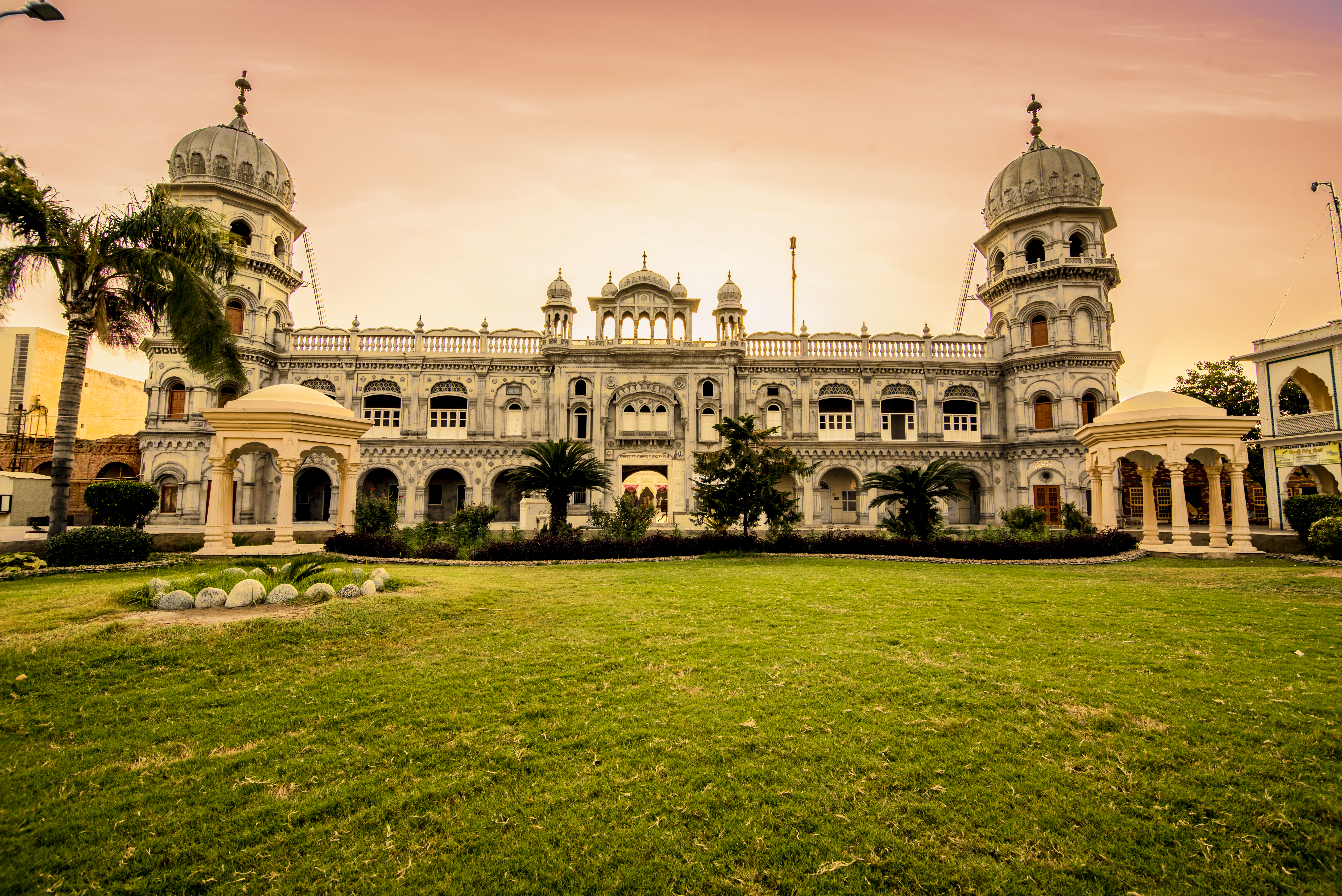|
Gobindghat
Govindghat is a town in Chamoli district, Uttarakhand, India, located at the confluence of the Alaknanda and Lakshman Ganga rivers. It lies around roughly from Joshimath on NH58 at an altitude of . It is the roadhead on the way to Shree Badrinathji yatra - One of the important places of worship of Hindus and the starting point for trekking to Hemkund Sahib and Valley of Flowers. Hundreds of people, mostly Hindu pilgrims to Shree Badrinathji and Sikh pilgrims on way to the holy shrine of Shree Hemkund Sahibji and occasional tourists to the Valley of Flowers, arrive here every day. The gurudwara, located on the right bank of the Alaknanda River, is the most important landmark in the area. It also provides accommodation to pilgrims. The local market has many hotels, guest houses and restaurants. The economy thrives on the traveling season, which begins at the end of May and lasts until the end of September. See also * River Pushpawati *Ghangaria Ghangaria is a small v ... [...More Info...] [...Related Items...] OR: [Wikipedia] [Google] [Baidu] |
Hemkund Sahib
Hemkund Sahib (also spelled Hemkunt), formally known as ''Gurudwara Shri Hemkund Sahib Ji'', is a Sikh place of worship and pilgrimage site in Chamoli district, Uttarakhand, India. It is devoted to Guru Gobind Singh (1666–1708), the tenth Sikh Guru, and finds mention in ''Dasam Granth''. With its setting of a glacial lake surrounded by seven mountain peaks, each adorned by a Nishan Sahib on its cliff, it is according to the Survey of India located in the Garhwal Himalaya at an elevation of . It is approached from Govindghat on the Rishikesh-Badrinath highway. The main town near Gobindghat is Joshimath. The elevation of the lake at Hemkund is approximately 13,650 feet. Etymology Hemkund is a Sanskrit name derived from ''Hem'' ("Snow") and ''Kund'' ("bowl"). Dasam Granth says this is the place where Pandu Raja practiced Yoga. In addition, the Dasam Granth says that in a former life, Guru Gobind Singh meditated intensely at Hemkund on Akaal Travel Hemkund is inaccessible fr ... [...More Info...] [...Related Items...] OR: [Wikipedia] [Google] [Baidu] |
Ghangaria
Ghangaria is a small village on the way to Hemkund Sahib, a popular pilgrimage site for Sikhs which is about 6 km from here and the Valley of Flowers, a national park known for its variety of flowers about 5 km from here. It is located in the northern Himalayan ranges at an altitude of 3049 meters in Uttarakhand state of India. Ghangaria is situated at the confluence of the rivers Bhyundar Ganga and Pushpawati, which forms Lakshman Ganga, that later meets the river Alaknanda at Govindghat. It is the last human habitation in the Bhyundar valley. This place is usually used by travelers as a base camp to visit Hemkund and Valley of flowers. It is only open from May till September. The rest of the year, the valley is covered under snow. Ghangaria can be reached after a trek of less than 11 km. Shared taxis are available up to 4 km from Govindghat. Ghangaria has a helipad. One can also hire a porter or mule or a helicopter to avoid this strenuous trekking. The ... [...More Info...] [...Related Items...] OR: [Wikipedia] [Google] [Baidu] |
River Pushpawati
Pushpawati River flows through the Valley of Flowers in Chamoli district in Garhwal region of the Indian state of Uttarakhand. Course The Pushpawati rises from the Tipra Glacier, near Rataban Rataban a Himalayan mountain peak situated in the Chamoli district of Uttarakhand, India India, officially the Republic of India (Hindi: ), is a country in South Asia. It is the seventh-largest country by area, the second-most populo ..., in the central part of the Garhwal region in the Himalayas. It flows in a southerly direction to join the Bhyundar Ganga near Ghagharia. The combined stream is thereafter known as the Lakshman Ganga. The latter merges with the Alaknanda River at Govindghat. The Pushpawati drains the Valley of Flowers. The glaciated upper valley of the Pushpawati is U-shaped. The river flows past thick glacial deposits. A number of glacier-fed streams join it in its upper reaches. It flows through a gorge in its lower reaches. The upper tracts a ... [...More Info...] [...Related Items...] OR: [Wikipedia] [Google] [Baidu] |
States And Territories Of India
India is a federal union comprising 28 states and 8 union territories, with a total of 36 entities. The states and union territories are further subdivided into districts and smaller administrative divisions. History Pre-independence The Indian subcontinent has been ruled by many different ethnic groups throughout its history, each instituting their own policies of administrative division in the region. The British Raj The British Raj (; from Hindi language, Hindi ''rāj'': kingdom, realm, state, or empire) was the rule of the British The Crown, Crown on the Indian subcontinent; * * it is also called Crown rule in India, * * * * or Direct rule in India, * Q ... mostly retained the administrative structure of the preceding Mughal Empire. India was divided into provinces (also called Presidencies), directly governed by the British, and princely states, which were nominally controlled by a local prince or raja loyal to the British Empire, which held ''de f ... [...More Info...] [...Related Items...] OR: [Wikipedia] [Google] [Baidu] |
Tourism In Uttarakhand
Uttarakhand is a state in the northern part of India. It is often referred to as the "Devbhumi" (literally 'Land of the Gods') due to its religious significance and numerous Hindu temples and pilgrimage sites found throughout the state. As a result, religious tourism forms a major portion of the tourism in the state. Uttarakhand is known for the natural environment of the Himalayas. 2019 Tourist Arrivals Domestic – 40,000,000 per/year and Foreigner – 150,000 per year. Tourism business in Uttarakhand generated 23,000 crores during 2013–14. Chota Char Dham File:Badrinath Valley, along the Alaknanda River, Uttarakhand.jpg, Badrinath Valley, along the Alaknanda River, Uttarakhand. File:Kedarnath 2.jpg, Kedarnath II File:Gangotri temple.jpg, Gangotri temple File:Yamunotri temple and ashram.jpg, Yamunotri temple and ashram Uttarakhand is famous for Chota Char Dham, which literally meaning 'journey to four centres'. These four religious centers in Uttarakhand are represente ... [...More Info...] [...Related Items...] OR: [Wikipedia] [Google] [Baidu] |
Alaknanda River
The Alaknanda is a Himalayan river in the Indian state of Uttarakhand and one of the two headstreams of the Ganges, the major river of Northern India and the holy river of Hinduism. In hydrology, the Alaknanda is considered the source stream of the Ganges on account of its greater length and discharge; however, in Hindu tradition and culture, the other headstream, the Bhagirathi, is considered the source stream. Course The Alaknanda rises at the confluence and foot of the Satopanth and Bhagirath Kharak glaciers in Uttarakhand. From its origin, it travels to the village of Mana, meets with the Saraswati River, a right bank tributary, and continues downstream through narrow valleys. It reaches the Badrinath valley, arrives at Hanumanchatti, and meets with the Ghrit Ganga, a right bank tributary. From Hanumanchatti, the river goes to Pandukeshwar and flows through wide valleys and steep terrains. At Vishnuprayag it meets Dhauliganga, a left bank tributary, and travels west t ... [...More Info...] [...Related Items...] OR: [Wikipedia] [Google] [Baidu] |
Gurudwara
A gurdwara (sometimes written as gurudwara) (Gurmukhi: ਗੁਰਦੁਆਰਾ ''guradu'ārā'', meaning "Door to the Sikh gurus, Guru") is a place of assembly and place of worship, worship for Sikhs. Sikhs also refer to gurdwaras as ''Gurdwara Sahib''. People from all faiths are welcomed in gurdwaras. Each gurdwara has a ''Darbar Sahib Hall, Darbar Sahib'' where the current and everlasting guru of the Sikhs, the scripture Guru Granth Sahib, is placed on a (an elevated throne) in a prominent central position. Any congregant (sometimes with specialized training, in which case they can be known by the term granthi) may recite, sing, and explain the verses from the Guru Granth Sahib, in the presence of the rest of the congregation. All gurdwaras have a hall, where people can eat free vegetarian food served by volunteers at the gurdwara. They may also have a medical facility room, library, nursery, classroom, meeting rooms, playground, sports ground, a gift shop, and finally a repair ... [...More Info...] [...Related Items...] OR: [Wikipedia] [Google] [Baidu] |
Govindghat As Seen After Crossing From River Alaknanda
Govindghat is a town in Chamoli district, Uttarakhand, India, located at the confluence of the Alaknanda and Lakshman Ganga rivers. It lies around roughly from Joshimath on NH58 at an altitude of . It is the roadhead on the way to Shree Badrinathji yatra - One of the important places of worship of Hindus and the starting point for trekking to Hemkund Sahib and Valley of Flowers. Hundreds of people, mostly Hindu pilgrims to Shree Badrinathji and Sikh pilgrims on way to the holy shrine of Shree Hemkund Sahibji and occasional tourists to the Valley of Flowers, arrive here every day. The gurudwara, located on the right bank of the Alaknanda River, is the most important landmark in the area. It also provides accommodation to pilgrims. The local market has many hotels, guest houses and restaurants. The economy thrives on the traveling season, which begins at the end of May and lasts until the end of September. See also *River Pushpawati *Ghangaria Ghangaria is a small villag ... [...More Info...] [...Related Items...] OR: [Wikipedia] [Google] [Baidu] |
Sikh
Sikhs ( or ; pa, ਸਿੱਖ, ' ) are people who adhere to Sikhism (Sikhi), a monotheistic religion that originated in the late 15th century in the Punjab region of the Indian subcontinent, based on the revelation of Guru Nanak. The term ''Sikh'' has its origin in the word ' (), meaning 'disciple' or 'student'. Male Sikhs generally have ''Singh'' ('lion'/'tiger') as their last name, though not all Singhs are necessarily Sikhs; likewise, female Sikhs have ''Kaur'' ('princess') as their last name. These unique last names were given by the Gurus to allow Sikhs to stand out and also as an act of defiance to India's caste system, which the Gurus were always against. Sikhs strongly believe in the idea of "Sarbat Da Bhala" - "Welfare of all" and are often seen on the frontline to provide humanitarian aid across the world. Sikhs who have undergone the '' Amrit Sanchar'' ('baptism by Khanda'), an initiation ceremony, are from the day of their initiation known as Khalsa, and they mu ... [...More Info...] [...Related Items...] OR: [Wikipedia] [Google] [Baidu] |
Hindu
Hindus (; ) are people who religiously adhere to Hinduism.Jeffery D. Long (2007), A Vision for Hinduism, IB Tauris, , pages 35–37 Historically, the term has also been used as a geographical, cultural, and later religious identifier for people living in the Indian subcontinent. The term ''"Hindu"'' traces back to Old Persian which derived these names from the Sanskrit name ''Sindhu'' (सिन्धु ), referring to the river Indus. The Greek cognates of the same terms are "''Indus''" (for the river) and "''India''" (for the land of the river). The term "''Hindu''" also implied a geographic, ethnic or cultural identifier for people living in the Indian subcontinent around or beyond the Indus River, Sindhu (Indus) River. By the 16th century CE, the term began to refer to residents of the subcontinent who were not Turkic peoples, Turkic or Muslims. Hindoo is an archaic spelling variant, whose use today is considered derogatory. The historical development of Hindu self-i ... [...More Info...] [...Related Items...] OR: [Wikipedia] [Google] [Baidu] |
The Times Of India
''The Times of India'', also known by its abbreviation ''TOI'', is an Indian English language, English-language daily newspaper and digital news media owned and managed by The Times Group. It is the List of newspapers in India by circulation, third-largest newspaper in India by circulation and largest selling English-language daily in the world. It is the oldest English-language newspaper in India, and the second-oldest Indian newspaper still in circulation, with its first edition published in 1838. It is nicknamed as "The Old Lady of Bori Bunder", and is an Indian "newspaper of record". Near the beginning of the 20th century, Lord Curzon, the Viceroy of India, called ''TOI'' "the leading paper in Asia". In 1991, the BBC ranked ''TOI'' among the world's six best newspapers. It is owned and published by Bennett, Coleman & Co. Ltd. (B.C.C.L.), which is owned by the Sahu Jain family. In the Brand Trust Report India study 2019, ''TOI'' was rated as the most trusted English newspap ... [...More Info...] [...Related Items...] OR: [Wikipedia] [Google] [Baidu] |
Valley Of Flowers
A valley is an elongated low area often running between hills or mountains, which will typically contain a river or stream running from one end to the other. Most valleys are formed by erosion of the land surface by rivers or streams over a very long period. Some valleys are formed through erosion by glacial ice. These glaciers may remain present in valleys in high mountains or polar areas. At lower latitudes and altitudes, these glacially formed valleys may have been created or enlarged during ice ages but now are ice-free and occupied by streams or rivers. In desert areas, valleys may be entirely dry or carry a watercourse only rarely. In areas of limestone bedrock, dry valleys may also result from drainage now taking place underground rather than at the surface. Rift valleys arise principally from earth movements, rather than erosion. Many different types of valleys are described by geographers, using terms that may be global in use or else applied only locally. F ... [...More Info...] [...Related Items...] OR: [Wikipedia] [Google] [Baidu] |





.jpg)
